Who needs another 2.8Mpix camera? In this case it’s not about the pixel count per se, but about the frame rates and the dynamic range.
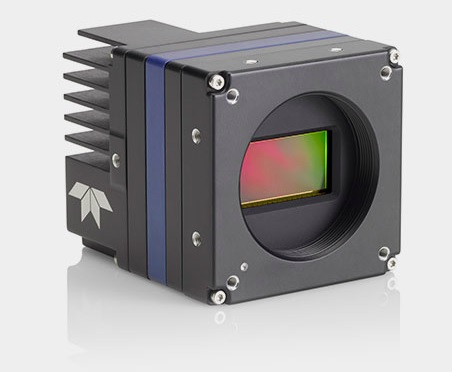
With more common interfaces like GigE and 5GigE we expect frame rates from a 2.8 Mpix camera in the range 20 – 120fps, respectively. But with the Camera Link High Speed (CLHS) interface, Teledyne DALSA’s new Falcon4-M2240 camera can deliver up to 1200fps. If your application demands high-speed performance together with 2.8Mpix resolution, this camera delivers.
Besides speed, an even more remarkable feature of the Falcon4-M2240, based on the Teledyne e2v Lince 2.8 MP, is a pixel well depth, or full well capacity, of ~138 [ke-]. THAT VALUE IS NOT A TYPO!! It really is ~138 [ke-]. Other sensors also thought of as high quality offer pixel well depths only 1/10th of this value, so this sensor is a game changer.
Why does pixel well depth matter? Recall the analogy of photons to raindrops, and pixel wells to buckets. With no raindrops, the bucket is empty, just as with no photons quantized to electrons, the pixel well is empty and the monochrome pixel would correspond to 0 or full-black. When the bucket, or pixel well, becomes exactly full with the last raindrop (electron) it can hold, it’s reached it’s full well capacity – the pixel value would be fully saturated at white (for a monochrome sensor).
The expressive capacity of each pixel admits the widest range of values in correlation to the full well capacity before charge overflows, so the camera is calibrated by the designer according to the sensor’s capabilities. Sensors with higher full well capacity are desirable, since they can capture all the nuances of the imaging target, which in turn gives your software maximum image features to identify.
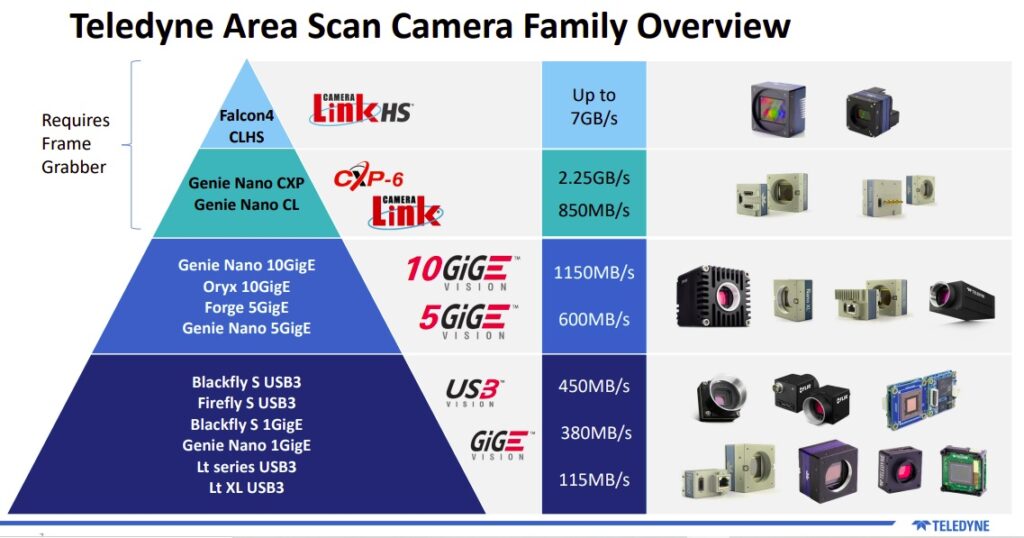
This newest member of the Falcon4 family joins siblings with sensors offering 11, 37, and 67 Mpix respectively. The Falcon4 family represents continues the success of the Falcon2 family, all of which share many common features: These include:
- CMOS global shutter
- High dynamic range
- 1000x anti-blooming
- M42 to M95 optics mount
- Camera Link or Camera Link HS interface
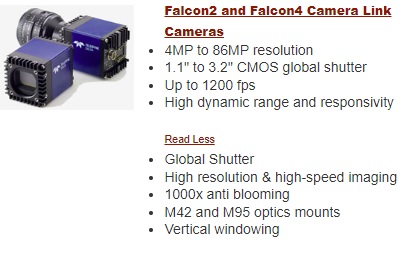
Even before the new firmware update (V1.02), Falcon4 cameras already offered:
- Multiple triggering options
- Multiple exposure control options
- In sensor binning
- Gain control
- In camera Look-up-table (LUT)
- Pixel correction
- … and more
Now with Firmware 1.02 the Falcon4 family gets these additional features:
- Multi-ROI
- ROI position change by sequencer cycling
- Digital gain change by sequencer cycling sequencer cycling of Digital Gain
- Exposure change by sequencer cycling
- Sequencer cycling of output pulse
- Meta Data
Multi-ROI
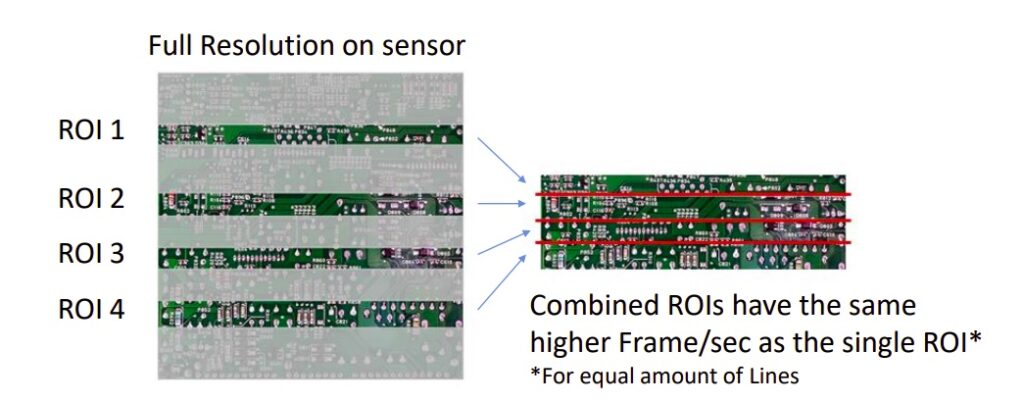
Region Of Interest (ROI) capabilities are compelling when an application has defined regions within a larger field that can be read out, skipping the un-necessary regions, thereby achieving much higher framerates than having to transfer the full resolution image from camera to host. It’s like having a number of smaller-sensor cameras, each pointed at their own region, but without the complexity of having to manage multiple cameras. As shown in the image below, the composite image frame rates are equivalent to the single ROI speed gains one might have known on other cameras.
Sequencer cycling of ROI position:
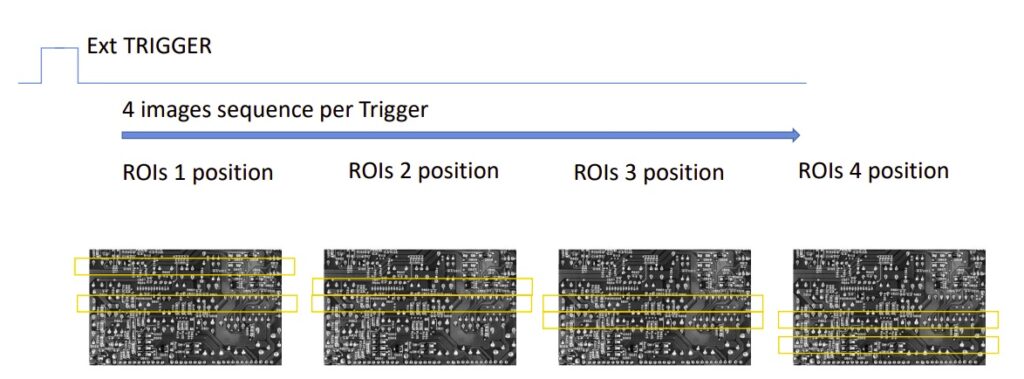
Cycling the ROI position for successive images might not seem to have obvious benefits – but what if the host computer could process image 1, while the camera acquires and begins transmitting image 2, and so forth? Overall throughput for the system rises – efficiency gains!
Sequencer cycling of output pulse:
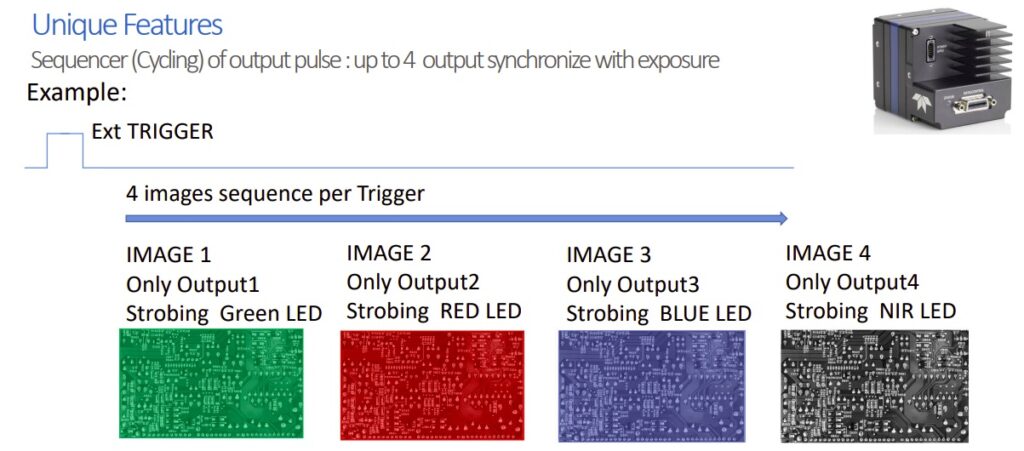
For certain applications, it can be essential to take 2 or more exposures of the same field of view, each under different lighting conditions. Under natural light, one might take a short, medium, and long exposure duration, to hedge on which is best, let the camera or object move to the next position, and let the software decide which is best. Or under controlled lighting, one might image once with white or colored light, then again with an NIR wavelength, knowing that each exposure condition reveals different features relevant to the application.
Metadata:

Metadata may not sound very exciting, and the visuals aren’t that compelling. But sending data along for the ride with each image may be critical for quality control archiving, application analysis and optimization, scheduled maintenance planning, or other reasons of your own choosing. For example, it may be valuable to know at what shutter or gain setting an image was acquired; or to have a timestamp; or to know the device ID from which camera the image came.
The Falcon2 and Falcon4 cameras are designed for use in industrial inspection, robotics, medical, scientific imaging, as well as wide variety of other demanding automated imaging and machine vision applications requiring ultra-high-resolution images.
Representative application fields:
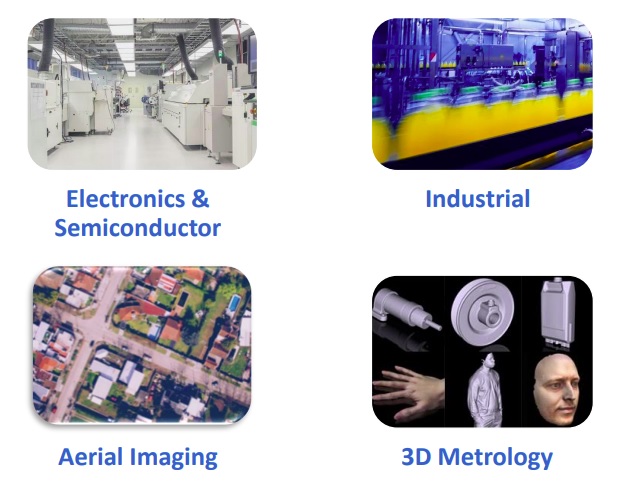
1st Vision’s sales engineers have over 100 years of combined experience to assist in your camera and components selection. With a large portfolio of lenses, cables, NIC card and industrial computers, we can provide a full vision solution!


